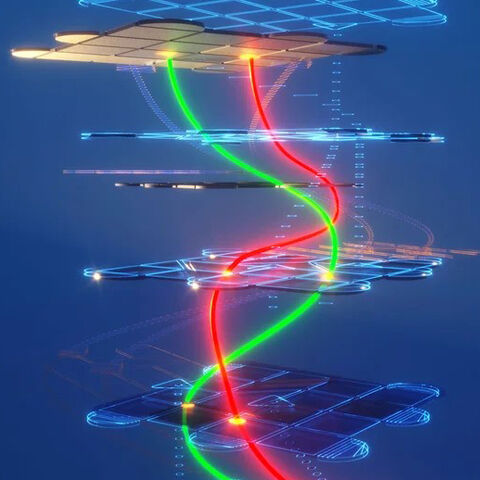News
Full listing
August 3, 2023
Social phenomena occur when many individuals interact. Societies develop characters that depend on demographics, population density, and the environment. In the real Quantum Realm (as opposed to that of the Marvel movies), electrons form societies whose character depends on the interaction among constituents and the effect of their environment. The characteristics of electron communities manifest through material properties. While human activities can be easily surveilled, the fundamental laws of quantum mechanics, the uncertainty principle, forbids complete surveillance of electrons. In this talk, Kim discusses how we observe and simulate the fundamentally mystical life of electrons to understand and predict the characters of various electron societies in the real quantum realm. Kim also talks about how AI tools can help in this challenging endeavor.
June 29, 2023
Cornell researchers validate key features of a novel unconventional superconductor and a fundamentally new phase of matter has been identified in topological superconductors.
The findings are published in the paper, “Detection of a Pair Density Wave State in UTe2,” published 29 June in Nature. Cooper-pair density waves are a form of electronic quantum matter in which pairs of electrons, instead of forming a conventional “superconductive” fluid where all are in the same freely moving state, freeze into a superconductive electron-pair crystal called a pair density wave state.
June 29, 2023
Like light switches, transistors control the flow of electric currents. Transistors are the fundamental building blocks of any computing device, from smartphones to the computers in cars. According to Phuong Nguyen, a PhD candidate under the direction of Kin Fai Mak, Physics, and Jie Shan, Applied Engineering and Physics, we could possibly fit billions or even trillions more transistors into a device, creating a computer that is ultrafast and consumes less energy. The key: two-dimensional materials.
June 23, 2023
Natasha Holmes has been named Ann S. Bowers Associate Professor, and Kin Fai Mak is the inaugural Josephson Family Professor. These professorships are possible because of generous gifts from alumni, parents and friends. Those gifts allow the College to replace retiring faculty, recruit stellar new faculty and recognize and retain mid-career and senior faculty to provide leadership across the disciplines and in areas of strategic importance.
June 2, 2023
Assistant Professor Debanjan Chowdhury is one of two LASSPers to receive a 2023 A&S New Frontier grant for a project. His project, titled “Probing dynamics of electronic quantum crystals on near-term quantum computers,” will study a special class of quantum magnets using noisy intermediate-scale quantum computing (NISQ) devices.
May 23, 2023
In a breakthrough for topological quantum computation, Google Quantum AI successfully observed the behavior of non-Abelion anyons for the first time ever. Despite being completely identical, when these particles are made to swap places, they retain a "memory" that makes it possible to tell that they've been swapped. And now this "memory" (along with other, even stranger behaviors) have been observed in a series of experiments. Eun-Ah Kim and former postdoc Yuri Lensky developed the protocol that allowed the team at Google Quantum AI to braid and manipulate the non-Abelian anyons.
May 12, 2023
Eun-Ah Kim, professor of physics in the College of Arts and Sciences, and Google researchers report the first demonstration of two-dimensional particles, called non-Abelian anyons, that are the key ingredient for realizing topological quantum computing, a promising method of introducing fault resistance to quantum computing.









